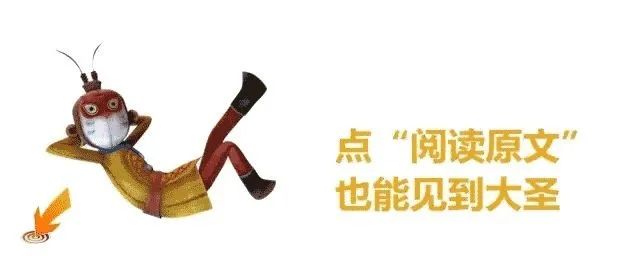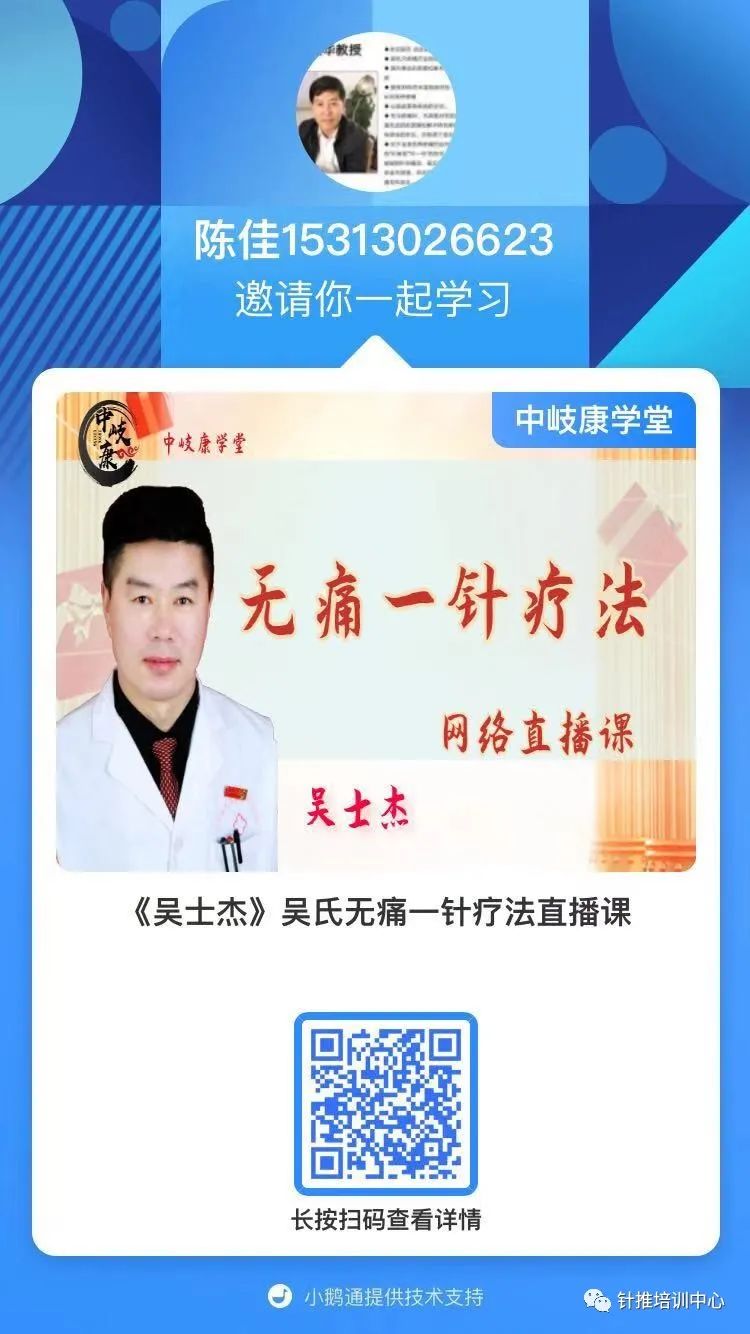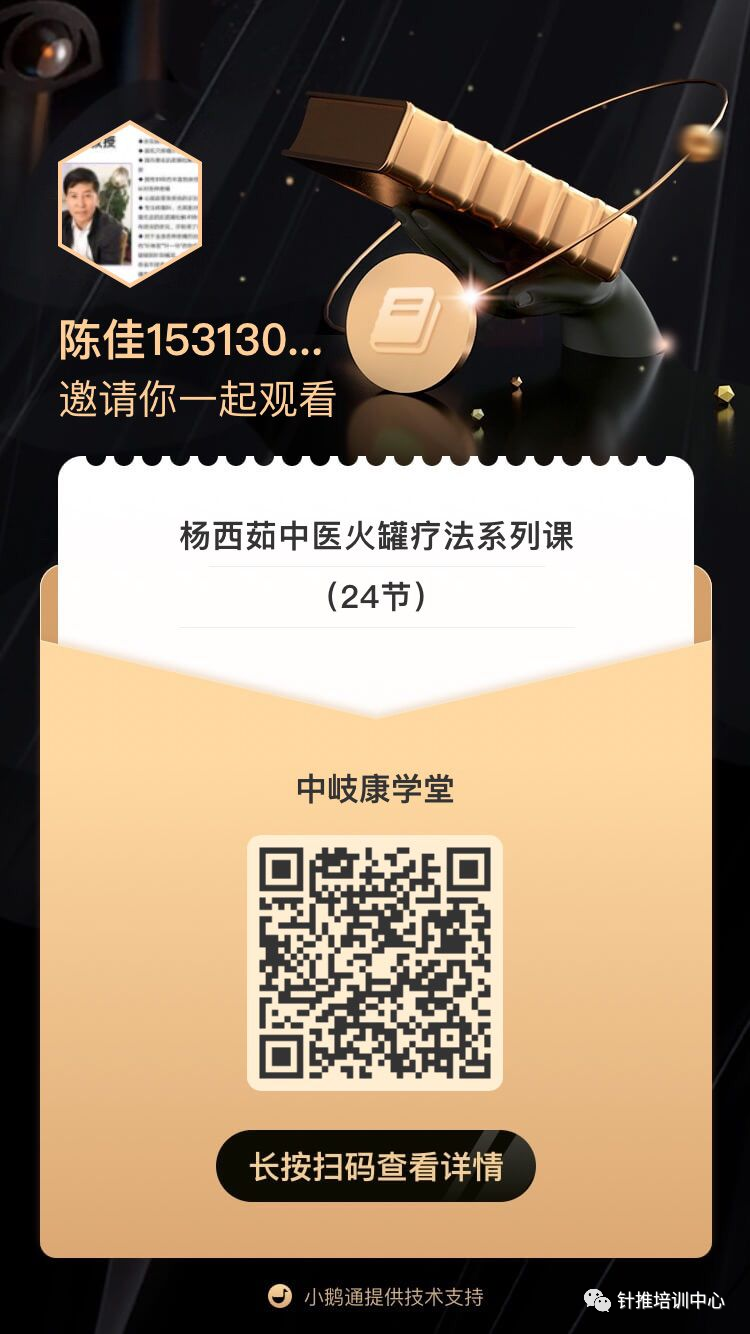Cupping therapy is one of the treasures of traditional Chinese medicine, widely used in our country for a long time. The method of cupping is recorded in the “Emergency Formulas for the Aftermath” by the Jin dynasty physician Ge Hong, which mentions the use of hollowed animal horns for external treatment of abscesses. In the Tang dynasty, Wang Tao’s “Secret Essentials of the External Clinic” also introduced the use of bamboo tubes for cupping, stating: “…take a bamboo tube about three fingers wide and one and a half inches long, leaving one end with a node, and shave the other end to be as thin as a sword. Boil this tube several times, and when hot, press it against the ink dot, and after a while, use a knife to break the area where the suction occurred. This will expel yellow, white, or red fluid, and sometimes pus or worms will come out. Repeat this until all harmful substances are expelled, and then remove it, and the body will feel light and clear.” From the above introduction, it is evident that cupping was already popular in the Jin and Tang dynasties.Additionally, the Qing dynasty scholar Zhao Xueming’s “Supplement to the Compendium of Materia Medica,” Wu Shangxian’s “Essentials of Medicine,” and “Golden Mirror of Medicine” provide clearer descriptions of the origins, methods, and indications for cupping in China.Cupping uses the cup as a tool, employing fire or suction to create negative pressure, which causes the cup to adhere to the skin, resulting in localized blood stasis. This achieves effects such as promoting circulation, invigorating blood flow, reducing swelling and pain, and dispelling wind and cold.Cups are generally made of bamboo or glass. Bamboo cups have thinner walls than glass cups, providing stronger suction, and are made from natural, eco-friendly materials, making them more durable against impacts. Glass cups have smoother surfaces and are transparent, allowing for easy observation of skin color changes during the cupping process. Glass cups processed with special techniques are more heat-resistant than bamboo cups and less prone to cracking, resulting in a longer usage period. Vacuum cups are often made from plastic materials like PC, eliminating open flames during cupping, thus reducing the risk of burns. They allow users to adjust the level of negative pressure according to their comfort, making them easier to operate. However, they lack the thermal stimulation of fire cups, making them less effective for patients with cold and damp constitutions. Individuals can choose the appropriate cupping method based on their conditions, but safety precautions should be taken. It is not recommended to perform cupping without professional guidance to avoid burns.“
The Four Techniques of Cupping and Correct Operating Methods
”According to the severity of the patient’s condition, cupping can be divided into four techniques: flash cupping, moving cupping, retained cupping, and bloodletting cupping.● Flash Cupping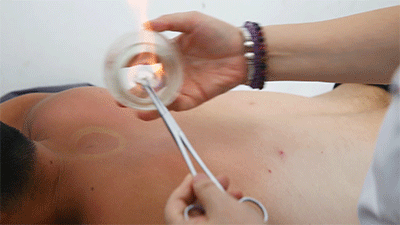 Steps❶ Wipe the area to be cupped with a cotton ball soaked in 75% alcohol.❷ Ignite a cotton ball soaked in 95% alcohol, quickly insert it into the glass cup, then immediately remove it and place the cup on the skin, then quickly lift it off.❸ Repeat the suction several times until the skin becomes red. Flash cupping usually does not leave marks on the skin and is the least irritating of the four techniques.● Moving Cupping
Steps❶ Wipe the area to be cupped with a cotton ball soaked in 75% alcohol.❷ Ignite a cotton ball soaked in 95% alcohol, quickly insert it into the glass cup, then immediately remove it and place the cup on the skin, then quickly lift it off.❸ Repeat the suction several times until the skin becomes red. Flash cupping usually does not leave marks on the skin and is the least irritating of the four techniques.● Moving Cupping Steps❶ Wipe the area to be cupped with a cotton ball soaked in 75% alcohol. Apply a lubricating substance or liquid to the skin surface where cupping will occur. The choice of lubricant varies based on the desired therapeutic effect. The image shows the use of purple grass oil, which promotes blood circulation.
Steps❶ Wipe the area to be cupped with a cotton ball soaked in 75% alcohol. Apply a lubricating substance or liquid to the skin surface where cupping will occur. The choice of lubricant varies based on the desired therapeutic effect. The image shows the use of purple grass oil, which promotes blood circulation.
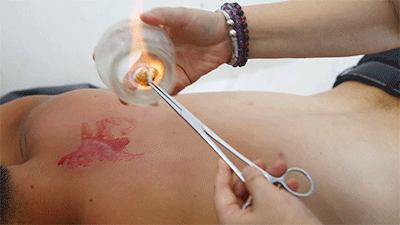
 ❷ Ignite a cotton ball soaked in 95% alcohol, quickly insert it into the glass cup, then immediately remove it and place the cup on the skin, holding the cup and moving it back and forth along the meridians. After moving cupping, if there are issues in the body, there will be large areas of marks left where the cup was moved. If there are no issues, there will generally just be cup marks that fade quickly.● Retained Cupping
❷ Ignite a cotton ball soaked in 95% alcohol, quickly insert it into the glass cup, then immediately remove it and place the cup on the skin, holding the cup and moving it back and forth along the meridians. After moving cupping, if there are issues in the body, there will be large areas of marks left where the cup was moved. If there are no issues, there will generally just be cup marks that fade quickly.● Retained Cupping


 ❶ Ignite a cotton ball soaked in 95% alcohol, quickly insert it into the glass cup, then immediately remove it and place the cup on the skin, leaving it for 10-15 minutes before removing it and wiping the skin clean with a cotton ball.● Bloodletting Cupping
❶ Ignite a cotton ball soaked in 95% alcohol, quickly insert it into the glass cup, then immediately remove it and place the cup on the skin, leaving it for 10-15 minutes before removing it and wiping the skin clean with a cotton ball.● Bloodletting Cupping ❶ Wipe the area to be cupped with a cotton ball soaked in 75% alcohol.
❶ Wipe the area to be cupped with a cotton ball soaked in 75% alcohol. ❷ Use a disposable blood collection needle to prick the skin locally.
❷ Use a disposable blood collection needle to prick the skin locally. ❸ Retain the cup.
❸ Retain the cup. ❹ Remove the cup and wipe away the blood that has flowed out with a cotton ball.Cupping therapy has effects such as promoting circulation, invigorating blood flow, reducing swelling and pain, and dispelling wind and cold. What do the cup marks left on the body indicate about health issues? Let’s explore “Cupping Mark Diagnosis.”“
❹ Remove the cup and wipe away the blood that has flowed out with a cotton ball.Cupping therapy has effects such as promoting circulation, invigorating blood flow, reducing swelling and pain, and dispelling wind and cold. What do the cup marks left on the body indicate about health issues? Let’s explore “Cupping Mark Diagnosis.”“
Cupping Mark Diagnosis
”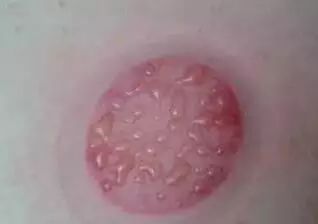 Red or black-red cup marks indicate excessive moisture, blisters, or edema, suggesting the patient has dampness, cold, or is affected by cold and dampness;
Red or black-red cup marks indicate excessive moisture, blisters, or edema, suggesting the patient has dampness, cold, or is affected by cold and dampness;  Blood-red or black-red blisters indicate a pathological response of long-term illness with dampness and blood stasis;
Blood-red or black-red blisters indicate a pathological response of long-term illness with dampness and blood stasis; 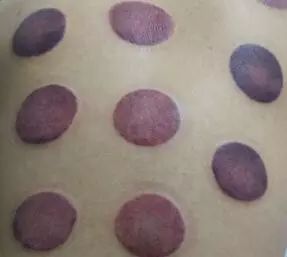 Purple-red or purple-black cup marks without stasis or fever indicate cold with blood stasis, varying in severity;
Purple-red or purple-black cup marks without stasis or fever indicate cold with blood stasis, varying in severity; 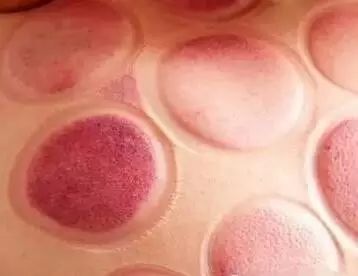 Purple-red or purple-black cup marks, or those with stasis, slight pain upon touch, and accompanying body heat indicate heat toxin syndrome;
Purple-red or purple-black cup marks, or those with stasis, slight pain upon touch, and accompanying body heat indicate heat toxin syndrome; 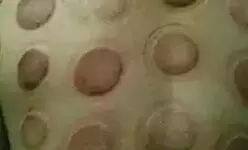 Itchy cup marks or those with skin patterns indicate wind syndrome;
Itchy cup marks or those with skin patterns indicate wind syndrome; 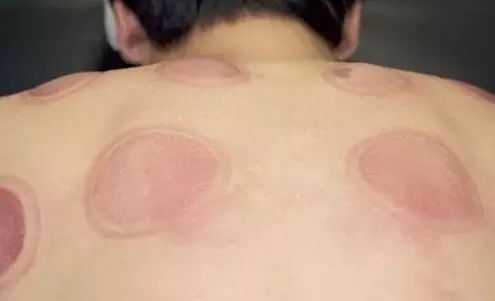 Unchanged skin color cup marks that feel cool to the touch indicate deficiency-cold syndrome.If there are no cup marks or if the cup marks disappear immediately after removal, it indicates a relatively mild state of sub-health. If the marks do not fade after several days, it suggests that the condition has persisted for a long time, requiring more attention to treatment and care. As the condition improves, the cup marks will also fade, indicating recovery.“
Unchanged skin color cup marks that feel cool to the touch indicate deficiency-cold syndrome.If there are no cup marks or if the cup marks disappear immediately after removal, it indicates a relatively mild state of sub-health. If the marks do not fade after several days, it suggests that the condition has persisted for a long time, requiring more attention to treatment and care. As the condition improves, the cup marks will also fade, indicating recovery.“
Indications, Main Points, and Contraindications for Cupping
”
1. Indications and Main Points:
『Respiratory System Indications』Acute and chronic bronchitis, asthma, pulmonary edema, pneumonia, pleuritis. Main points: Dazhù (大杼), Fengmén (风门), Pèiyǔ (肺俞), Yīngchuāng (膺窗).『Digestive System Indications』Acute and chronic gastritis, gastric neuralgia, dyspepsia, hyperacidity. Main points: Gānyǔ (肝俞), Píyǔ (脾俞), Wèiyǔ (胃俞), Gèiyǔ (隔俞), Zhāngmén (章门).Acute and chronic enteritis. Main points: Píyǔ (脾俞), Wèiyǔ (胃俞), Dàchángyǔ (大肠俞), Tiānshù (天枢).『Circulatory System Indications』Hypertension. Main points: Gānyǔ (肝俞), Dǎnyǔ (胆俞), Píyǔ (脾俞), Shèn yǔ (肾俞), Wěizhōng (委中), Chéngshān (承山), Zú sān lǐ (足三里). Focus on the back and lower limbs.Arrhythmia. Main points: Xīnyǔ (心俞), Shèn yǔ (肾俞), Gèiyǔ (膈俞), Píyǔ (脾俞).Insufficient blood supply to the heart. Main points: Xīnyǔ (心俞), Gèiyǔ (膈俞), Gāohuāngyǔ (膏肓俞), Zhāngmén (章门).『Musculoskeletal System Indications』Cervical joint pain, shoulder joint and scapular pain, elbow joint pain. Main points: Tender points and surrounding joints for cupping. Back pain, lumbar pain, sacral pain, hip pain. Main points: Cupping based on the location of pain and surrounding joints. Knee pain, lower back pain, heel pain. Main points: Use small glass cups for cupping at the pain site and surrounding joints.『Nervous System Indications』Neurogenic headache, occipital neuralgia. Main points: Dàzhuì (大椎), Dàzhù (大杼), Tiānzhù (天柱) with a face cushion, Zhìyáng (至阳).Intercostal neuralgia. Main points: Zhāngmén (章门), Qīmén (期门), and intercostal pain areas for cupping.Sciatica. Main points: Zhìbiān (秩边), Huán tiào (环跳), Wěizhōng (委中).Neuroparalysis due to rheumatic damage. Main points: Dàzhuì (大椎), Gāohuāngyǔ (膏盲俞), Shèn yǔ (肾俞), Fēngshì (风市), and the affected areas.Cervical muscle spasm. Main points: Jiān jǐng (肩井), Dàzhuì (大椎), Jiān zhōng yǔ (肩中俞), Shēnzhù (身柱).Gastrocnemius muscle spasm. Main points: Wěizhōng (委中), Chéngshān (承山), and the affected gastrocnemius area.Facial nerve spasm. Main points: Xiàguān (下关), Yìntáng (印堂), Jiáochē (颊车), using small cups, only retaining for 6 seconds, then removing, and repeating 10 to 20 times.Diaphragmatic spasm. Main points: Gèiyǔ (隔俞), Jīngmén (京门).『Gynecological Indications』Dysmenorrhea. Main points: Guānyuán (关元), Xuèhǎi (血海), Àshì (阿是穴).Amenorrhea. Main points: Guānyuán (关元), Shèn yǔ (肾俞).Menorrhagia. Main points: Guānyuán (关元), Zǐgōng (子宫).Leukorrhea. Main points: Guānyuán (关元), Zǐgōng (子宫), Sān yīn jiāo (三阴交).Pelvic inflammatory disease. Main points: Zhìbiān (秩边), Yāoyǔ (腰俞), Guānyuán yǔ (关元俞).『Surgical and Wound Indications』Boils. Main points: Shēnzhù (身柱) and the boil area, using small cups with face cushions for cupping.Multiple folliculitis. Main points: Zhìyáng (至阳), local small cups with face cushions for cupping.Lower limb ulcers. Main points: Local small cups with face cushions for cupping.Acute mastitis. Main points: After hot compressing the local area with a new towel soaked in warm water, use medium or large cups for cupping, which can be repeated 5 to 6 times. 2. Contraindications for CuppingHigh fever, convulsions, spasms; skin allergies or broken ulcers; areas with thin muscles or uneven bones and excessive hair are not suitable for application; pregnant women should be cautious with cupping on the lumbar and abdominal areas.3. Cupping Precautions1. After guasha and cupping, do not take a cold shower or drink cold beverages for two hours. If taking a shower after two hours, use warm water.2. During guasha and cupping, do not use air conditioning or fans to avoid air convection.3. Do not perform cupping on an empty stomach or after overeating; wait at least one hour after meals before cupping.Long press to recognize the WeChat QR code to watch the video and learn the technique
2. Contraindications for CuppingHigh fever, convulsions, spasms; skin allergies or broken ulcers; areas with thin muscles or uneven bones and excessive hair are not suitable for application; pregnant women should be cautious with cupping on the lumbar and abdominal areas.3. Cupping Precautions1. After guasha and cupping, do not take a cold shower or drink cold beverages for two hours. If taking a shower after two hours, use warm water.2. During guasha and cupping, do not use air conditioning or fans to avoid air convection.3. Do not perform cupping on an empty stomach or after overeating; wait at least one hour after meals before cupping.Long press to recognize the WeChat QR code to watch the video and learn the technique

Scan the QR code in the corresponding image below to watch the instructional video
|
Heart Blood Deficiency Video Course |
Liu Yan’s Energy Hand Postpartum |
Wu Shijie Live Needle Course |
|
Yang Qianru’s TCM Cupping Therapy |
Li Jin’s Easy Hexagram Three Needles |
Liu Tao’s Root Cutting Technique (Picking Wool Carbuncle + Bloodletting + Special Point Needling) |
